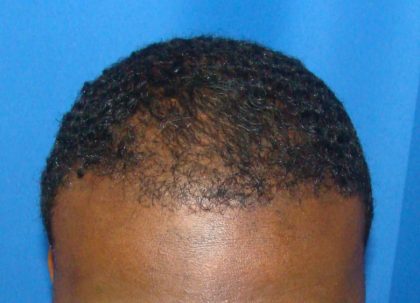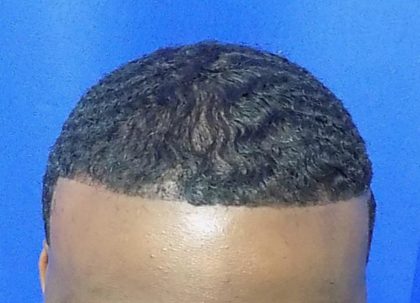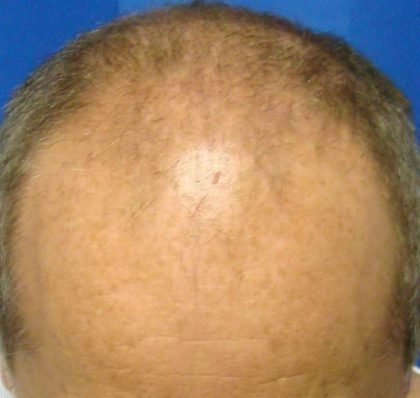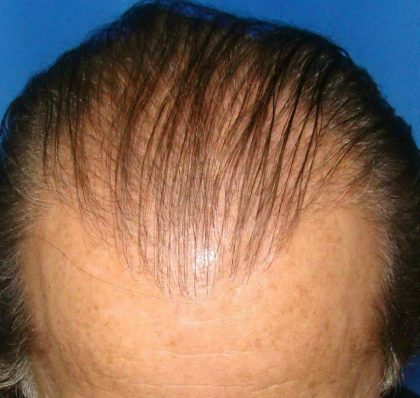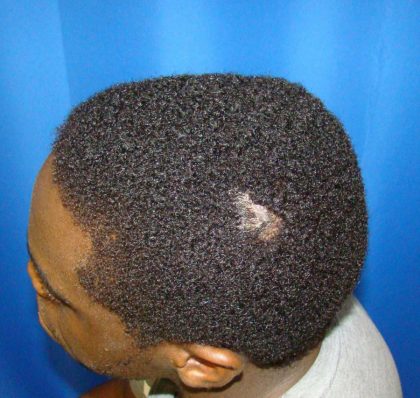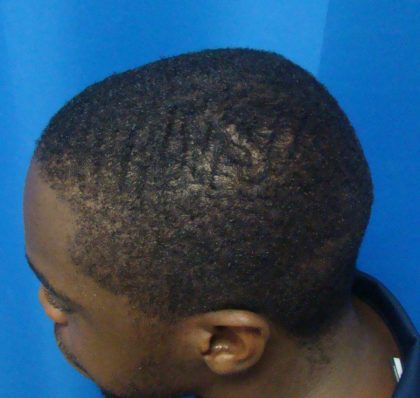Male pattern baldness is an extraordinarily common reason for hair loss in men. Despite being something most men experience at some point in their lives, a receding hairline, bald spot, or thinning hair can affect anyone’s self-esteem.
Men can be devastated by the onset of male pattern baldness, believing there is nothing they can do to stop or reverse it. However, in many cases, there are treatments available.
At Houston Hair Transplant Center (HHTC), we are proud to be the hair transplant doctors of choice for professional athletes, actors, celebrities, and more. If you would like to explore your hair restoration possibilities, then schedule a consultation with Dr. Jezic today.
Dr. Goran Jezic is one of the most trusted hair experts across Texas, and he can help you repopulate your scalp with natural, healthy hair re-growth.
If you have any questions, please do not hesitate to call any of our conveniently located offices:
Contents
Before and After Photos
About Male Pattern Baldness
Male pattern baldness (clinically known as androgenic alopecia) is the most common cause of hair loss in men, accounting for over 95% of cases. This condition simply means the hair is thinning and is not believed to be caused by another medical condition, such as an autoimmune or thyroid disorder. About 25% of men experience hair loss by age 21. By the time they have reached 35, 66% of men have experienced some sort of hair loss, even if it is not particularly noticeable. (1) By age 50, that number jumps to 85% having experienced a noticeable amount of hair loss.
No two cases of male pattern baldness are the same. Some men experience receding hairlines above the forehead first, while others lose hair on top (and are left with hair on the sides and back), and some get a bald spot on the crown of the head first.
Male pattern baldness is believed to be the result of excess dihydrotestosterone (DHT — a byproduct of testosterone). DHT falls under the class of male sex hormones, also known as androgens. Androgens have many functions, and one of their main jobs is to regulate hair growth. Having excess androgens can cause more hair to grow on a man’s face and body, but it can also cause hair on the head to fall out. However, the lasting impact of hair loss typically occurs because the hair follicles themselves are shrinking, oftentimes due to a sensitivity to dihydrotestosterone. (1) As they shrink, they produce fewer hairs.
Contrary to popular belief, one hair follicle does not produce one single hair. Most follicles produce as many as five individual strands of hair. As fewer hairs are produced by the DHT-sensitive follicles, the area of the scalp where those follicles are located appears to be thinning out. Over time, the follicle will either produce hairs that are thinner, shorter, or finer–or stop producing hair entirely.
Benefits of Treating Male Pattern Baldness
Houston Hair Transplant Center (HHTC) offers multiple solutions for hair restoration. When patients seek treatment for male pattern baldness with us, they often experience:
- Restoration of hair density: Treatments like hair transplants add volume to thinning areas.
- Natural appearance: Modern FUE hair transplant techniques ensure that restored hair looks realistic and blends seamlessly with existing hair.
- Confidence boost: Many patients experience improved self-image and increased confidence post-treatment.
- Long-lasting results: Procedures such as hair transplants provide permanent results as they use healthy hair follicles resistant to DHT.
- Enhanced youthfulness: A fuller head of hair is often associated with a younger appearance.
- Customizable options: Multiple treatment modalities can be tailored specifically to each patient’s needs, offering personalized care.
Candidates
Candidates for male pattern baldness treatments are men who experience hair thinning or balding. There is no age requirement for these treatments. Any adult male can benefit from hair restoration. Those who feel that their hair loss significantly impacts their quality of life can benefit greatly from hair restoration treatments. Patients should also have realistic expectations for their results. Significant hair regrowth is possible, but it may take a while for results to appear.
Personal Consultation
The path toward addressing your male pattern baldness begins with a personal consultation with Dr. Jezic and/or one of his experienced hair restoration clinicians. At this appointment, Dr. Jezic and his team will carefully evaluate your medical history, discuss your concerns about hair loss, and examine your scalp’s conditions. This step is essential as it helps him assess the extent of your hair thinning, the state of your hair follicles, and the appropriate treatment options for you. Each person’s needs are unique; therefore, a tailored approach ensures better clinical outcomes and results. Based on these findings, Dr. Jezic and his clinicians will help you select the ideal treatment plan aligned with your aesthetic goals.
Preparation
You will receive specific preparation instructions from Dr. Jezic and his esteemed clinicians that are tailored to your specific treatment(s). All patients should thoroughly wash their scalp on the morning of their treatment. Some may be required to alter their medication use to avoid blood-thinning compounds. Any patients who smoke or use other forms of nicotine should cease its use for a few weeks before, during, and after their treatment.
Hair Restoration Treatments
Dr. Jezic will typically have patients start with medications like finasteride and minoxidil before exploring surgical procedures. (1) In many cases, multiple hair restoration methods may be included in a treatment plan to optimize a patient’s results. In these cases, Dr. Jezic will plan a unique hybrid hair restoration plan.
Follicular Unit Extraction (FUE)
One way to treat androgenic alopecia is with a procedure called a follicular unit extraction. During this procedure, we remove healthy, functional hair follicles from densely populated areas of the head (typically on the back of the head, between the ears) and transplant them to areas that are thinning. Dr. Jezic and his team of clinicians regularly perform FUE procedures with the advanced innovative ATERA technology that keeps grafts lubricated throughout the procedure, increases patient comfort and decreases procedure duration. FUE has advantages over traditional methods because it is much more precise, allowing for more follicles to be accepted by the skin. (2)
Oral, Topical or Injectable Finasteride
Finasteride is a medication designed to treat male pattern baldness by blocking androgen production. It is more commonly known by its brand names, Propecia and Proscar. This medication works by reducing one of the hormones typically responsible for hair loss. Through this, hair loss is decelerated. (1)
Oral, Topical or Injectable Minoxidil
Minoxidil, commonly known by the brand name Rogaine, is available as an over-the-counter topical solution. Stronger concentrations are available by prescription. Dr. Jezic and his team also offer oral and injectable options. Minoxidil is a cream, foam, or lotion applied directly to the scalp. It is designed to slow hair loss caused by androgenic alopecia (among other causes of hair loss) and works to stimulate new hair growth in follicles. (1) Much like finasteride, results can take at least four months to become evident but may take up to one year to become fully noticeable.
Cellular Micrografting
Cellular micrografting is an innovative and minimally invasive hair restoration method that extracts hair growth factors and stem cells from healthy hair follicles and injects them into balding areas. (3) Dr. Jezic’s clinicians will harvest stem cells from healthy hair follicles and then combine them in a mixture of saline and other beneficial growth compounds. These stem cells prompt the surrounding follicle cells to enter growth cycles, which helps to reverse the effects of male pattern baldness. When combined with other treatments, patients see impressive, natural hair growth. (3)
Results
The results of your treatment may take a few months to become fully visible. When they do, you will see a fuller head of healthy, natural, attractive hair. The results of hair restoration can be life-changing. Many patients experience a fuller head of hair that significantly boosts their confidence and improves their lives. Results tend to appear natural due to advanced surgical techniques that prioritize hair density and strategic placement. Additionally, any scarring from the procedure is minimal and often difficult to detect.
Cost of Hair Restoration in Houston
Hair restoration is unique for each patient. Treatments that work for some individuals might not have the same impressive results for others. As such, Dr. Jezic and his team can offer price estimates and ranges for treatments after examining your hair loss and evaluating your medical history. When you meet with Dr. Jezic and/or his clinicians for a personal consultation, you will receive a price quote. If you have any questions, please call our office to get the information you need!
FAQ
Is male pattern baldness genetic?
Androgenetic alopecia is largely caused by genetics, but hormonal shifts can also play a role.
How effective are hair transplants?
Hair transplants have shown remarkable success rates, providing long-term and natural-looking results for treated individuals.
Can I combine hair restoration treatments?
Yes. Many individuals find success using a combination of treatments, such as minoxidil and hair transplant surgery, for optimal results.
When can I expect to see the results of my male pattern baldness treatment?
While some patients observe initial growth within a few months, full results typically develop within 12 months following the procedure.
References
- Asfour L, Cranwell W, Sinclair R. Male Androgenetic Alopecia. www.ncbi.nlm.nih.gov. Published January 25, 2023. https://www.ncbi.nlm.nih.gov/sites/books/NBK278957/
- Dua A, Dua K. Follicular unit extraction hair transplant. Journal of cutaneous and aesthetic surgery. 2010;3(2):76-81. doi:https://doi.org/10.4103/0974-2077.69015
- Zari S. Short-Term Efficacy of Autologous Cellular Micrografts in Male and Female Androgenetic Alopecia: A Retrospective Cohort Study. Clinical, Cosmetic and Investigational Dermatology. 2021;Volume 14:1725-1736. doi:https://doi.org/10.2147/ccid.s334807

